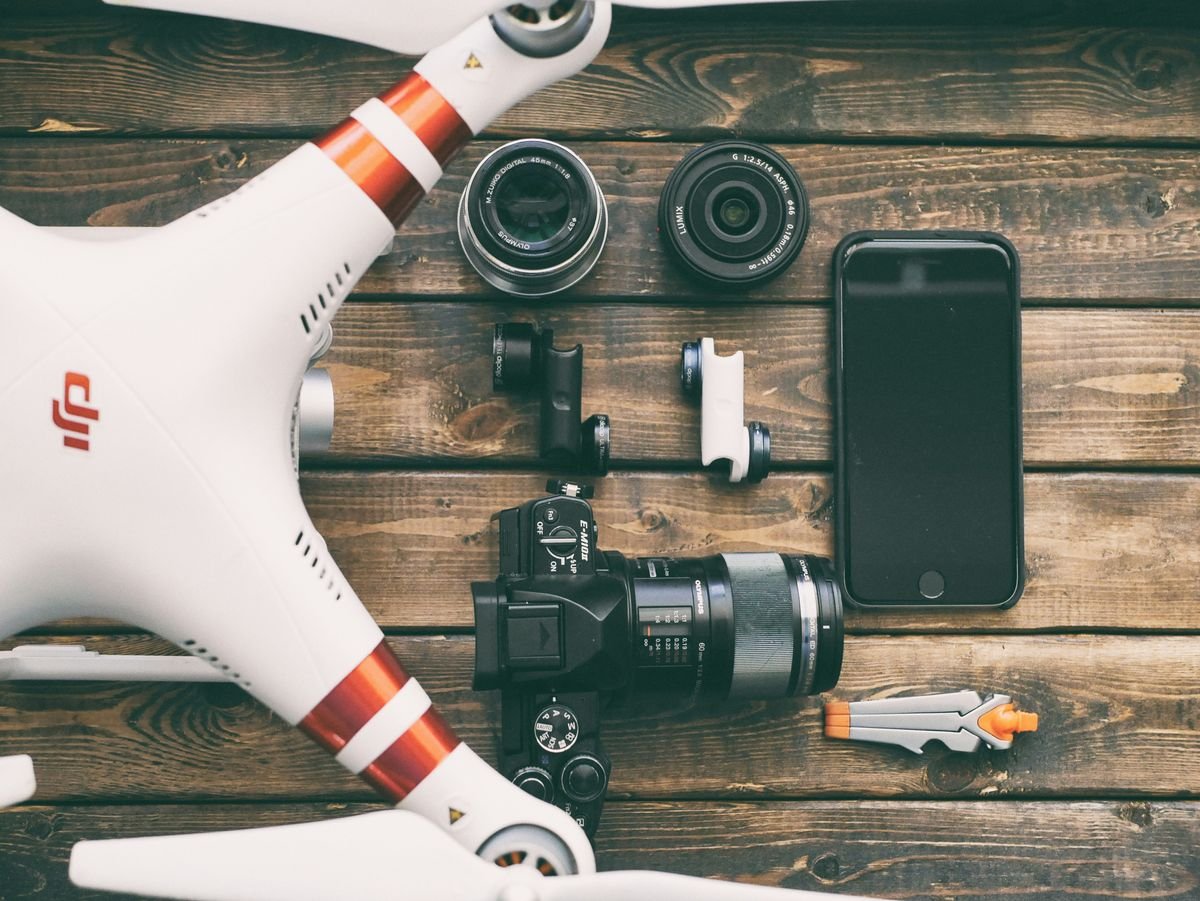In this article, we will delve into the significant impact of AI and aerial drones on geological exploration, highlighting how these advanced technologies are revolutionizing traditional methods and leading to substantial time and cost savings for geologists.
Key Takeaways
- Machine learning algorithms and image recognition systems play a crucial role in enhancing geological exploration efficiency.
- Aerial drones provide high-resolution imaging, remote sensing capabilities, and efficient terrain mapping for geological surveys.
- The integration of AI and aerial drones enables real-time data processing, autonomous surveying, and enhanced decision-making support in field operations.
- Challenges such as weather dependency, data security concerns, and regulatory compliance issues need to be addressed when utilizing AI and aerial drones in geology.
- The cost-effectiveness of AI and aerial drones is evident through the reduction in surveying costs, minimized equipment maintenance expenses, and increased exploration efficiency.
The Role of AI in Geological Exploration

Machine Learning Algorithms
In our exploration endeavors, we have embraced the transformative power of machine learning algorithms. These sophisticated tools enable us to sift through vast amounts of geological data with unprecedented efficiency. Machine learning algorithms are particularly adept at identifying patterns and anomalies that may indicate the presence of valuable minerals.
- They facilitate predictive modeling, allowing us to forecast geological formations and mineral deposits with greater accuracy.
- The algorithms assist in classifying rock types and assessing mineral compositions, which are critical in determining the potential of a site.
- By automating data interpretation, we reduce human error and increase the reliability of our findings.
The integration of machine learning into our geological exploration processes has significantly accelerated our ability to make informed decisions on where to focus our efforts.
The snippet from the title ‘Deep Learning in Mining: Advancements in Mineral Exploration’ highlights the capability of deep learning algorithms to excel in analyzing geological data and autonomously recognizing patterns indicative of mineral signatures, which is a testament to the advancements we are witnessing in the field.
Data Analysis Techniques
In our pursuit of more efficient geological exploration, we have adopted an enhanced strategy for geo-exploratory data analysis. This approach is particularly beneficial in regions where exploration has been limited and research progress is scarce. By leveraging sophisticated data analysis techniques, we can extract valuable insights from complex datasets, which were previously untapped due to technological constraints.
Data analysis in geology involves a series of steps that transform raw data into actionable knowledge. These steps include data cleaning, normalization, integration, and interpretation. To illustrate:
- Data cleaning ensures the removal of inaccuracies and inconsistencies.
- Normalization adjusts the data to a common scale.
- Integration combines data from various sources to provide a comprehensive view.
- Interpretation involves the application of statistical models to discern patterns and anomalies.
Our methodology facilitates the identification of geological features that are not immediately apparent to the naked eye or through traditional survey methods. It allows us to predict the presence of valuable minerals and to assess the potential for natural hazards with greater accuracy.
The present study introduces an advanced strategy for analyzing geo-exploratory datasets for regions with limited exploration and research progress. By doing so, we are not only enhancing the efficiency of geological surveys but also paving the way for more informed decision-making in the field.
Image Recognition Systems
We are witnessing a transformative era in geological exploration, where image recognition systems powered by artificial intelligence (AI) are enabling us to analyze and interpret geological features with unprecedented accuracy. These systems can identify patterns and anomalies that might be invisible to the naked eye, significantly enhancing our ability to make informed decisions about potential sites for exploration.
- Automated rock classification
- Mineral composition analysis
- Fracture detection
- Vegetation mapping
By leveraging the capabilities of AI-driven image recognition, we can rapidly process vast amounts of visual data, translating into a more efficient exploration process.
The integration of these systems into our field operations has not only streamlined the workflow but also reduced the risk of human error. As we continue to refine these technologies, the potential for discovery and the efficiency of our operations will only increase. Check out this list of exciting AI tools that geologists like you are using to make new discoveries!
Benefits of Aerial Drones in Geological Surveys

High-Resolution Imaging
We are witnessing a transformative era in geological exploration with the advent of high-resolution imaging through aerial drones. These sophisticated cameras capture detailed images that were once impossible to obtain from ground-based surveys. The clarity and precision of these images allow for more accurate geological assessments, revealing features such as fault lines, mineral deposits, and erosion patterns with unprecedented detail.
High-resolution imaging enables us to analyze geological formations with a granularity that manual methods cannot match. This capability is particularly beneficial in inaccessible or hazardous areas where traditional methods are impractical or dangerous. The following list highlights the key advantages:
- Enhanced image quality for better interpretation
- Ability to cover large areas quickly
- Safe acquisition of data from challenging terrains
The integration of high-resolution imaging in our exploration toolkit has not only improved the quality of data but also the speed at which we can process and understand geological structures. This advancement is crucial for timely and informed decision-making in the field of geology.
Remote Sensing Capabilities
We harness the power of aerial drones equipped with remote sensing technologies to transform geological exploration. High-resolution sensors on drones collect multispectral, thermal, and radar data, enabling us to detect and analyze geological features that are otherwise challenging to identify.
- Multispectral imaging reveals mineral compositions.
- Thermal sensors detect temperature anomalies linked to geological activity.
- Radar penetrates vegetation and soil to provide images of the subsurface.
By integrating these remote sensing capabilities, we can rapidly assess and monitor vast and inaccessible terrains, significantly enhancing our understanding of the Earth’s surface.
The application of remote sensing in geomorphology is a testament to its versatility. From the interpretation of images to produce detailed geomorphological maps, we gain invaluable insights into the Earth’s structure and processes.
Efficient Terrain Mapping
We recognize the transformative impact that aerial drones have on terrain mapping. By deploying these advanced tools, we can swiftly cover vast areas, collecting data that was once unattainable or required extensive time and resources. The creation of large-scale 3D digital topographic maps has been significantly expedited, offering a comprehensive view of the surveyed landscapes.
Terrain mapping with drones is not just about speed; it’s about the richness of the data acquired. The stereoscopic visual effects provided by drone technology enable us to obtain ground elevation information. This capability is crucial for generating realistic 3D terrain models, which in turn make our surveying results more realistic and detailed.
The integration of drones in geological exploration has redefined the efficiency of terrain mapping, allowing for rapid data acquisition and detailed topographical analysis.
The advantages of using drones for terrain mapping include:
- Enhanced data precision and resolution
- Ability to access difficult or remote areas
- Reduced human risk in hazardous terrains
- Quicker turnaround time for data processing
Integration of AI and Aerial Drones in Field Operations

Real-Time Data Processing
We are witnessing a transformative era in geological exploration, where the integration of AI with aerial drones is enabling real-time data processing. This advancement significantly accelerates the analysis of geological data, allowing us to make informed decisions promptly.
The use of drones equipped with advanced sensors and geographic information systems (GIS) technology facilitates the immediate capture and relay of data to our processing units. Here, AI algorithms swiftly interpret the data, identifying patterns and anomalies that might indicate valuable geological features.
The immediacy of this process is crucial, especially in time-sensitive scenarios such as natural disaster assessments or mineral exploration campaigns.
To illustrate the impact of real-time data processing, consider the following benefits:
- Rapid response to dynamic geological events
- Decreased time between data acquisition and analysis
- Enhanced accuracy in geological mapping
By harnessing the power of real-time data, we are not only improving the efficiency of our field operations but also reducing the risk of costly delays.
Autonomous Surveying
We are witnessing a transformative era in geological exploration with the advent of autonomous surveying. Drones equipped with AI capabilities are now able to navigate and collect data without direct human intervention, leading to a significant leap in operational efficiency. These intelligent machines can adapt to various terrains and environmental conditions, ensuring comprehensive coverage of the surveyed area.
Autonomous drones streamline the surveying process by following pre-programmed flight paths and making real-time adjustments based on the observed data. This not only reduces the need for manual control but also minimizes the risk of human error. The integration of AI further enhances the drones’ ability to identify geological features of interest and to prioritize areas for detailed analysis.
The synergy between AI and aerial drones in autonomous surveying is paving the way for unprecedented levels of precision and reliability in geological exploration.
The table below outlines the key advantages of autonomous surveying with AI-powered drones:
| Advantage | Description |
|---|---|
| Efficiency | Reduced time spent on surveying due to automated flight paths. |
| Accuracy | Enhanced data precision through advanced sensors and algorithms. |
| Safety | Lowered risk to human surveyors by accessing hazardous or remote areas. |
| Cost | Decreased operational costs by minimizing manual labor and time on site. |
Enhanced Decision-Making Support
We recognize the transformative impact that the integration of AI with aerial drones has on decision-making processes in geological exploration. The synergy between AI-driven analytics and drone-acquired data significantly enhances the quality and speed of decisions made in the field. With real-time data processing, geologists can quickly interpret complex geological features and assess potential resources with greater confidence.
- Rapid identification of mineral deposits
- Accurate assessment of geological hazards
- Swift adaptation to changing field conditions
This integration facilitates a more dynamic and informed approach to exploration, allowing for immediate adjustments to survey strategies based on the latest data.
The table below illustrates the improvements in decision-making efficiency when utilizing AI and aerial drones compared to traditional methods:
| Method | Time to Decision | Accuracy |
|---|---|---|
| Traditional | Several days | Moderate |
| AI & Drones | Hours | High |
Challenges and Limitations of AI and Aerial Drones in Geology

Weather Dependency
In our exploration endeavors, we must acknowledge the significant impact of weather conditions on the performance and reliability of aerial drones. Drones are inherently susceptible to adverse weather, such as high winds, rain, and extreme temperatures, which can impede their flight capabilities and, by extension, the quality of data collected. This sensitivity necessitates meticulous planning and the incorporation of contingencies for weather-related disruptions.
Weather dependency is not only a logistical challenge but also a technical one. The precision of sensors and instruments aboard drones can be compromised under certain environmental conditions, leading to potential inaccuracies in geological data. To mitigate these risks, we employ advanced forecasting tools and adaptive flight planning to ensure the integrity of our surveys.
- Real-time weather monitoring
- Adaptive mission planning
- Use of weather-resistant drone models
- Implementation of backup schedules
The integration of these strategies is crucial to maintaining the continuity and accuracy of geological surveys in the face of unpredictable weather patterns.
Data Security Concerns
In our pursuit of integrating AI and aerial drones into geological exploration, we must address the significant issue of data security. The protection of sensitive geological data is paramount, as it encompasses valuable information about potential resource locations and proprietary exploration techniques. We recognize that the data collected by drones can be vulnerable to unauthorized access and cyber-attacks.
To mitigate these risks, we have identified several key strategies:
- Establishing encrypted communication channels for data transmission
- Implementing strict access controls and authentication protocols
- Regularly updating security software to guard against new threats
It is essential to ensure that all stakeholders are aware of the importance of data security measures and are trained in best practices to prevent breaches.
The motivation behind our research and implementation of security measures is to propose a secure communication network, especially as drones, or UAVs, are increasingly utilized for surveillance and data collection in high demand scenarios.
Regulatory Compliance Issues
We must acknowledge the intricate web of regulations that govern the use of AI and aerial drones in geological exploration. Navigating these regulations is essential to ensure compliance and avoid legal pitfalls. The rules vary significantly by country and region, often reflecting local privacy laws, airspace control, and environmental protection statutes.
Regulatory bodies frequently update policies to keep pace with technological advancements, which can pose a challenge for geologists and companies aiming to integrate these technologies into their operations. It is imperative to stay informed and adaptable to these changes to maintain operational legality.
- Understand local and international regulations
- Ensure privacy and data protection standards are met
- Obtain necessary permits and licenses for drone operations
- Adhere to environmental guidelines and restrictions
The dynamic nature of regulatory frameworks requires a proactive approach to compliance, with a focus on education and collaboration with legal experts to mitigate risks associated with non-compliance.
Cost-Effectiveness of AI and Aerial Drones in Geological Exploration

Reduction in Surveying Costs
We have observed a significant decrease in the costs associated with geological surveying due to the integration of aerial drones. By employing drones equipped with advanced sensors, we can cover large areas more quickly than traditional methods, which often require extensive manpower and time-consuming practices. The use of drones not only reduces the need for on-the-ground teams but also minimizes the risks associated with accessing remote or difficult terrain.
LiDAR, a technology often used in drone surveying, exemplifies the cost savings. By using drones to conduct LiDAR surveys, we can significantly reduce costs and the time associated with traditional surveying techniques. This is particularly evident when considering the expenses related to hiring survey crews, transporting them to various locations, and the potential need for repeat visits due to incomplete data or human error.
The streamlined process of drone surveying not only cuts down on direct costs but also accelerates the timeline for project completion, allowing for more rapid data acquisition and analysis.
Here is a simplified breakdown of cost reductions:
- Lower labor costs due to reduced need for survey teams
- Decreased transportation and logistical expenses
- Minimized risk of costly delays and errors
- Reduced equipment wear and tear
Minimized Equipment Maintenance Expenses
We recognize the significant impact of AI-driven predictive maintenance in the geological exploration sector. By anticipating equipment needs, we can minimize equipment failures and enhance machinery lifespans. This proactive approach not only ensures operational continuity but also leads to a substantial reduction in maintenance costs.
Predictive maintenance strategies, enabled by AI, allow us to identify potential issues before they escalate into costly repairs or replacements. The integration of AI with aerial drones provides a comprehensive overview of equipment condition, even in remote or difficult-to-access areas.
- Regular monitoring and diagnostics
- Scheduled maintenance based on AI predictions
- Reduced downtime due to unforeseen equipment failures
The synergy between AI and aerial drones in predictive maintenance is transforming how we approach equipment care in geological exploration, making it more efficient and cost-effective.
Increased Exploration Efficiency
We have witnessed a significant leap in exploration efficiency due to the integration of AI and aerial drones. The synergy between advanced algorithms and aerial mobility has unlocked new potentials in geological exploration. For instance, drones equipped with magnetometers are now a game-changer in geophysical surveys, offering precision and efficiency that were previously unattainable.
The use of drones allows for rapid data collection over large areas, which, when combined with AI-driven analysis, can lead to faster decision-making and more accurate identification of mineral deposits.
The following list highlights key areas where efficiency has been notably increased:
- Rapid data acquisition: Drones cover vast areas quickly, reducing the time needed for data collection.
- Enhanced data quality: High-resolution sensors provide detailed geological data.
- Streamlined operations: AI algorithms process and interpret data in real-time, eliminating delays.
- Reduced human error: Automated systems minimize the risk of mistakes in data handling.
By embracing these technologies, we are not only accelerating the pace of geological surveys but also enhancing the quality of the data we collect. This breakthrough technology is reshaping the landscape of geophysical exploration, offering unparalleled precision, efficiency, and cost-effectiveness.
Future Trends in AI and Aerial Drone Applications for Geologists

Predictive Modeling Advancements
We are witnessing a significant transformation in geological exploration with the advent of AI-based predictive modeling. These models are capable of analyzing vast amounts of geospatial data, including topographical, geological, and remote sensing datasets, to predict potential mineral deposits and geological formations with greater accuracy than ever before.
Predictive modeling in geology harnesses the power of advanced algorithms and machine learning techniques, which allows us to identify patterns and anomalies that would be imperceptible to the human eye. This capability not only enhances our understanding of the Earth’s subsurface but also streamlines the exploration process by pinpointing areas of interest more efficiently.
- Enhanced accuracy in identifying mineral deposits
- Reduction in time spent on data analysis
- Improved risk assessment for exploration projects
By integrating predictive modeling into our exploration strategies, we are able to optimize our efforts and focus on the most promising sites, thereby reducing the environmental impact and ensuring a more sustainable approach to resource extraction.
Enhanced Environmental Monitoring
We are witnessing a transformative period in environmental monitoring, where the integration of AI with aerial drones is leading to unprecedented capabilities. The synergy between AI’s analytical prowess and drones’ operational flexibility is enhancing our ability to monitor environmental changes. This is particularly vital in geology, where understanding the dynamics of the Earth’s surface can inform a wide range of ecological and human activities.
Environmental monitoring involves not just the collection of data, but also its interpretation and the prediction of future changes. With AI, we can process vast amounts of data from drone surveys to detect subtle changes that might indicate geological events or environmental shifts. The following list outlines the key benefits of this integration:
- Real-time analysis of environmental data
- Early detection of potential geological hazards
- Tracking of ecological changes over time
- Improved accuracy in predicting environmental impacts
By harnessing the power of AI and aerial drones, we are better equipped to understand and respond to the Earth’s natural processes.
However, we must also acknowledge the challenges that come with this technology. As we develop innovative tools for improved volcano monitoring and other geological applications, we must ensure that these tools are reliable and effective in a variety of conditions.
Collaborative Research Opportunities
We recognize the potential for collaborative research opportunities in the realm of geological exploration, where AI and aerial drones are pivotal. The synergy between different scientific disciplines and technological domains is fostering groundbreaking advancements.
Through shared initiatives, we can pool resources and expertise to tackle complex geological challenges. This collective approach not only accelerates the pace of discovery but also enriches the quality of data collected:
- Cross-disciplinary teams combining geologists, data scientists, and drone operators
- Joint ventures between academic institutions and industry leaders
- International collaborations to address global geological concerns
By embracing collaboration, we are setting the stage for innovative solutions that transcend individual capabilities.
Furthermore, the integration of enhanced battery technologies, as highlighted by Utilities One, is a testament to the ongoing research and development efforts aimed at increasing the efficiency and flight times of drones, which is crucial for extensive geological surveys.
Conclusion
In conclusion, the integration of AI and aerial drones in geological exploration has significantly transformed the traditional methods, leading to substantial time and cost savings for geologists. The utilization of these advanced technologies has enabled more efficient data collection, analysis, and decision-making processes, ultimately enhancing the overall exploration outcomes. As the field of geology continues to evolve, embracing AI and aerial drones will be crucial for staying competitive and maximizing the benefits of modern exploration practices.
Frequently Asked Questions
How does AI contribute to geological exploration?
AI aids geological exploration by utilizing machine learning algorithms to analyze data, identify patterns, and interpret images, enhancing the efficiency of exploration processes.
What are the key benefits of using aerial drones in geological surveys?
Aerial drones provide high-resolution imaging, remote sensing capabilities, and efficient terrain mapping, allowing geologists to gather detailed and accurate data for exploration purposes.
How are AI and aerial drones integrated in field operations?
AI and aerial drones enable real-time data processing, autonomous surveying, and provide enhanced decision-making support to geologists during field operations, improving overall efficiency.
What are the main challenges and limitations of AI and aerial drones in geology?
Challenges include weather dependency affecting drone operations, data security concerns related to data transmission and storage, and regulatory compliance issues governing drone usage in geological exploration.
In what ways do AI and aerial drones contribute to cost-effectiveness in geological exploration?
They reduce surveying costs by streamlining data collection processes, minimize equipment maintenance expenses by automating tasks, and increase exploration efficiency by providing accurate and timely information.
What are the future trends in AI and aerial drone applications for geologists?
Future trends include advancements in predictive modeling, enhanced environmental monitoring capabilities using drones, and collaborative research opportunities facilitated by AI and drone technologies.
How do AI and aerial drones impact environmental sustainability in geological exploration?
AI and aerial drones help minimize the environmental impact of exploration activities by reducing the need for extensive ground surveys, lowering carbon emissions, and promoting efficient resource utilization.
What training is required for geologists to effectively utilize AI and aerial drones in their work?
Geologists need training in data analysis, machine learning concepts, drone operation, and understanding geological data interpretation to effectively leverage AI and aerial drones for exploration purposes.



